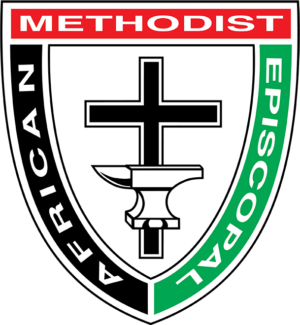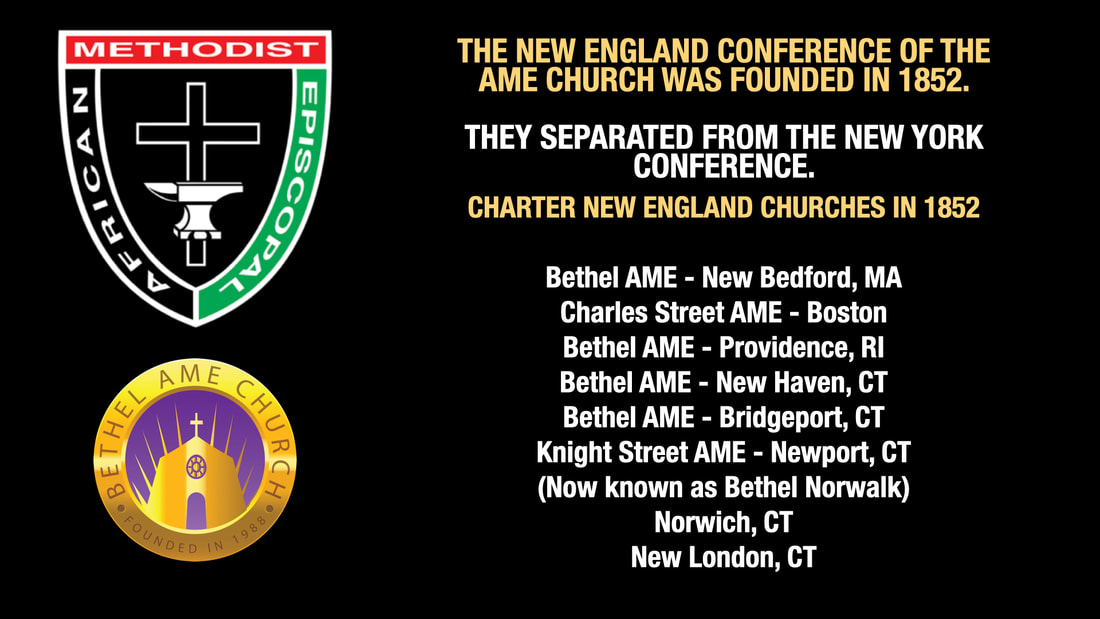UNDERSTANDING THE AME CHURCH

The word African means that the church was organized by people of African descent and heritage. It does not mean that the church was founded in Africa, or that it was for persons of African descent only.
The church’s roots are of the family of Methodist churches. Methodism provides an orderly system of rules and regulations and places emphasis on a plain and simple gospel.
Episcopal refers to the form of government under which the church operates. The chief executive and administrative officers of the African Methodist Episcopal denomination are the Bishops of the church.
The AME church was founded in 1787. It is the oldest Black denomination in the United States.
The AMEC grew out of the Free African Society (FAS) which Richard Allen, Absalom Jones, and others established in Philadelphia in 1787. When officials at St. George’s MEC pulled Blacks off their knees while praying, FAS members discovered just how far American Methodists would go to enforce racial discrimination against African Americans. Hence, these members of St. George’s made plans to transform their mutual aid society into an African congregation. Although most wanted to affiliate with the Protestant Episcopal Church, Allen led a small group who resolved to remain Methodists. In 1794 Bethel AME was dedicated with Allen as pastor. To establish Bethel’s independence from interfering White Methodists, Allen, a former Delaware slave, successfully sued in the Pennsylvania courts in 1807 and 1815 for the right of his congregation to exist as an independent institution. Because Black Methodists in other middle Atlantic communities encountered racism and desired religious autonomy, Allen called them to meet in Philadelphia to form a new Wesleyan denomination, the AME Church.
Source: Dr. Dennis Dickerson and www.ame-church.com
=================
Currently, there are 20 Districts in the AME Church, 13 in the continental US, and the rest around the world. There are approximately 2.5 million AMEs worldwide.
Carole Copeland Thomas is a lifelong AME, now living outside Boston in the New England Annual Conference in the First Episcopal District.
For complete information about the denomination, please visit www.ame-church.com.
=================
What Is An Annual Conference?
The Annual Conference of each of the 20 Districts of the AME Church is a Meeting at the call of the Episcopal Bishop for all Pastors and Members of the Annual Conference. This Meeting Allows Pastors to report on the progress of their Churches. It is also a time of renewal and revival where we come to reflect on the year past and renew for the year to come.
Source: https://pacamechurch.org
There are 7 Conferences in the First Episcopal District
Philadelphia (The First Conference of the District)
New York (The NE Conference split off from New York in 1852)
New Jersey
New England
Delaware
Bermuda (Yes, the country of Bermuda)
Western New York
The church’s roots are of the family of Methodist churches. Methodism provides an orderly system of rules and regulations and places emphasis on a plain and simple gospel.
Episcopal refers to the form of government under which the church operates. The chief executive and administrative officers of the African Methodist Episcopal denomination are the Bishops of the church.
The AME church was founded in 1787. It is the oldest Black denomination in the United States.
The AMEC grew out of the Free African Society (FAS) which Richard Allen, Absalom Jones, and others established in Philadelphia in 1787. When officials at St. George’s MEC pulled Blacks off their knees while praying, FAS members discovered just how far American Methodists would go to enforce racial discrimination against African Americans. Hence, these members of St. George’s made plans to transform their mutual aid society into an African congregation. Although most wanted to affiliate with the Protestant Episcopal Church, Allen led a small group who resolved to remain Methodists. In 1794 Bethel AME was dedicated with Allen as pastor. To establish Bethel’s independence from interfering White Methodists, Allen, a former Delaware slave, successfully sued in the Pennsylvania courts in 1807 and 1815 for the right of his congregation to exist as an independent institution. Because Black Methodists in other middle Atlantic communities encountered racism and desired religious autonomy, Allen called them to meet in Philadelphia to form a new Wesleyan denomination, the AME Church.
Source: Dr. Dennis Dickerson and www.ame-church.com
=================
Currently, there are 20 Districts in the AME Church, 13 in the continental US, and the rest around the world. There are approximately 2.5 million AMEs worldwide.
Carole Copeland Thomas is a lifelong AME, now living outside Boston in the New England Annual Conference in the First Episcopal District.
For complete information about the denomination, please visit www.ame-church.com.
=================
What Is An Annual Conference?
The Annual Conference of each of the 20 Districts of the AME Church is a Meeting at the call of the Episcopal Bishop for all Pastors and Members of the Annual Conference. This Meeting Allows Pastors to report on the progress of their Churches. It is also a time of renewal and revival where we come to reflect on the year past and renew for the year to come.
Source: https://pacamechurch.org
There are 7 Conferences in the First Episcopal District
Philadelphia (The First Conference of the District)
New York (The NE Conference split off from New York in 1852)
New Jersey
New England
Delaware
Bermuda (Yes, the country of Bermuda)
Western New York
What Is AME Protocol?
THE NEW ENGLAND ANNUAL CONFERENCE
WAS FOUNDED IN 1852
At Bethel AME Church, New Bedford, Massachusetts
Enjoy these interviews with retired educator and AME Historian, Herbert Knight.
He is a proud member of Bethel AME Church in Bloomfield, Connecticut.
He is a proud member of Bethel AME Church in Bloomfield, Connecticut.
AME CHURCH ORIGINS PART ONE
NEW ENGLAND ANNUAL CONFERENCE IN 1852 TO JARENA LEE
PART TWO
20 Districts Of The AME Church
The AME Church is divided into 20 districts, spanning North America and Bermuda, the Caribbean, India, sub-Saharan Africa Europe, and parts of South America:
- First District – Bermuda, Delaware, New England, New Jersey, New York, Western New York, and Philadelphia
- Second District – Baltimore, Washington, D.C., Virginia, North Carolina and Western North Carolina
- Third District – Ohio, Pittsburgh, North Ohio, South Ohio and West Virginia
- Fourth District – Indiana, Chicago, Illinois, Michigan, Canada and a mission extension in India
- Fifth District – California, Southern California, Desert Mountain, Midwest, Missouri, and Pacific Northwest
- Sixth District – Georgia, Southwest Georgia, Atlanta-North, Macon, South Georgia and Augusta
- Seventh District – Palmetto, South Carolina, Columbia, Piedmont, Northeast South Carolina and Central South Carolina
- Eighth District – South Mississippi, North Mississippi, Central North Louisiana, and Louisiana
- Ninth District – Alabama River Region, Southeast Alabama, Northeast Alabama, Southwest Alabama, Northwest Alabama
- Tenth District – Texas, Southwest Texas, North Texas and Northwest Texas
- Eleventh District – Florida, Central, South, West Coast, East, Bahamas
- Twelfth District – Oklahoma, Arkansas, East Arkansas, and West Arkansas
- Thirteenth District – Tennessee, East Tennessee, West Tennessee, Kentucky and West Kentucky
- Fourteenth District – Liberia, Central Liberia, Sierra Leone, Ghana, Nigeria, Côte d'Ivoire and Togo-Benin
- Fifteenth District – Angola, Cape, Boland, Eastern Cape, Kalahari, Namibia, and Queenstown
- Sixteenth District – Guyana/Suriname, Virgin Islands, European, Dominican Republic, Haiti, Jamaica, Windward Islands and Brazil
- Seventeenth District – Southeast Zambia, Southwest Zambia, Northeast Zambia, Northwest Zambia, Zambezi, Congo Brazzaville, Katanga, Kananga, Kinshasa, Mbuji-mayi, Rwanda, Burundi and Tshikapa
- Eighteenth District – Botswana, Lesotho, Mozambique, and Eswatini
- Nineteenth District – Orangia, Natal, M.M. Mokone Memorial Conference, East, West
- Twentieth District – Malawi North, Malawi South, Malawi Central, Northeast Zimbabwe, Southwest Zimbabwe, Central Zimbabwe


